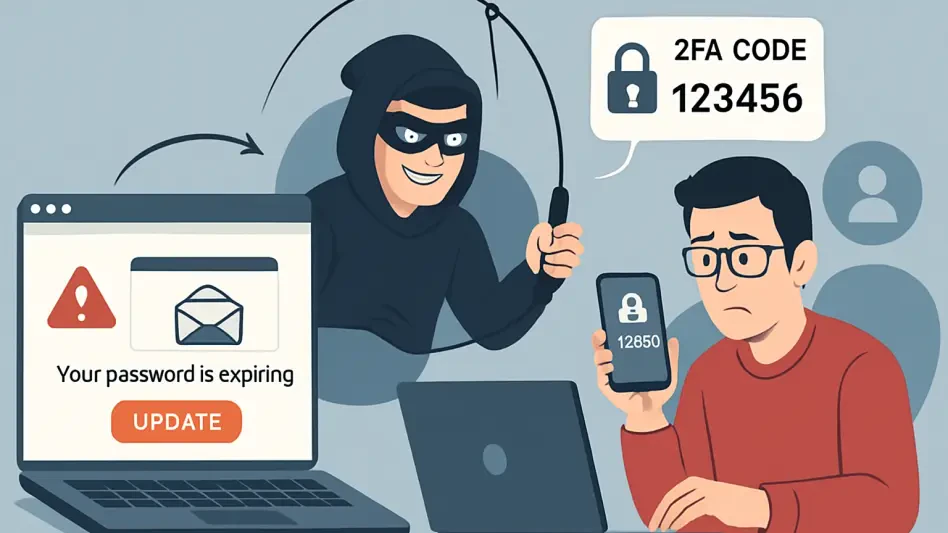In an era where digital security threats evolve at an alarming pace, a new player has emerged on the cybercrime scene, targeting sensitive user data with chilling precision. This latest menace, known as Raven Stealer, is a compact yet potent infostealer malware that surfaced recently, catching the attention of cybersecurity analysts. Designed to pilfer login credentials, payment details, and other personal information from unsuspecting victims, it represents a growing challenge in the realm of data protection. What sets this threat apart is its cunning use of a widely trusted communication platform to exfiltrate stolen data, bypassing conventional security barriers with ease. As cybercriminals continue to lower the entry barriers for such attacks through accessible tools, understanding the mechanics and implications of this malware becomes critical for both individuals and organizations aiming to safeguard their digital assets against these stealthy intrusions.
Unveiling the Mechanics of a Stealthy Threat
A deeper look into Raven Stealer reveals a sophisticated design crafted for maximum impact with minimal detection. Coded in Delphi/C++, this malware operates as a compact binary, often delivered through deceptive means such as renamed attachments or compressed executables. Once activated, it runs silently without displaying any console window, targeting Chromium-based browsers to harvest a wealth of data, including saved passwords, cookies, cryptocurrency wallets, and autofill information. The stolen data is meticulously organized into a structured directory on the victim’s system, making it easier for attackers to analyze and exploit post-infection. This methodical approach to data theft underscores the malware’s efficiency, allowing threat actors to quickly capitalize on compromised information while maintaining a low profile during the attack process. The reliance on seemingly innocuous delivery methods further amplifies the risk, as users may unknowingly trigger the malware through routine interactions with seemingly legitimate files.
Beyond its initial infiltration, Raven Stealer employs advanced evasion techniques to remain undetected by traditional security measures. One notable tactic involves reflective process hollowing, where a decrypted DLL is injected into a suspended browser process, masquerading under the legitimate signature of trusted software. By leveraging low-level system calls, the malware avoids user-land detection, blending seamlessly into normal system operations. Additionally, it uses headless execution flags to further obscure its activities, ensuring that its presence goes unnoticed even under scrutiny. After collecting the targeted data, the malware compresses it into a ZIP file using PowerShell and transmits it through a discreet channel, embedding identifiable markers for streamlined cataloging by attackers. This combination of stealth and precision highlights the evolving sophistication of infostealer threats and the challenges they pose to conventional cybersecurity defenses.
Leveraging Trusted Platforms for Malicious Ends
Raven Stealer’s most alarming feature is its innovative use of a popular messaging platform’s infrastructure for data exfiltration, exploiting encrypted channels that are often permitted by corporate firewalls. By hijacking the bot API of this widely accepted service, the malware ensures that stolen data is transmitted securely to threat actors without triggering suspicion from standard network monitoring tools. This tactic not only demonstrates the adaptability of modern cybercriminals but also exposes a critical vulnerability in the trust placed in mainstream communication tools. As these platforms are integral to both personal and professional interactions, their exploitation for command-and-control operations creates a blind spot in many security frameworks. The seamless integration of such services into malicious workflows illustrates a broader trend where legitimate technologies are weaponized, complicating efforts to distinguish between benign and harmful activities on a network.
The implications of this approach are far-reaching, as Raven Stealer’s ability to bypass multi-factor authentication through stolen session cookies poses a severe risk to both individuals and enterprises. A single infection can compromise domain credentials and payment card details, granting attackers unauthorized access to critical systems and financial resources. This reflects a growing democratization of cybercrime, where tools like this malware lower the technical barrier for malicious actors, enabling even those with limited expertise to execute high-impact attacks. The reliance on encrypted, trusted platforms for data theft further exacerbates the challenge of detection, as security teams must now scrutinize legitimate traffic for signs of abuse. Addressing this threat requires a shift toward more proactive measures, such as enhanced phishing detection and real-time analysis, to identify and mitigate these covert operations before they inflict significant damage.
Countermeasures and Future Implications
In response to the rising threat posed by Raven Stealer, cybersecurity experts have developed specific detection methods to identify and neutralize this malware. Analysts have provided tools such as YARA rules that target unique strings and hashes associated with the malware, offering a practical means to flag its presence on affected systems. These countermeasures are vital for organizations seeking to protect their networks from stealthy infostealers that evade traditional antivirus solutions. However, the effectiveness of such tools depends on timely updates and integration into broader security protocols, as threat actors continuously adapt their methods to counter detection efforts. Beyond technical defenses, raising awareness about deceptive delivery tactics, such as suspicious attachments or unverified downloads, remains essential in preventing initial infections. A multi-layered approach that combines technology and education is necessary to stay ahead of these evolving digital threats.
Looking back, the emergence of Raven Stealer marked a pivotal moment in the ongoing battle against infostealer malware, as it exposed critical gaps in existing security frameworks. Its sophisticated evasion tactics and exploitation of trusted platforms underscored the need for adaptive strategies that could keep pace with rapidly changing attack vectors. Moving forward, the focus shifted toward developing more robust phishing defenses and sandbox analysis tools to intercept such threats in real time. Collaboration between cybersecurity professionals and platform providers also became a priority, aiming to fortify legitimate services against malicious exploitation. By investing in innovative detection technologies and fostering a culture of vigilance, the industry took significant steps to mitigate the risks posed by similar threats, ensuring that both individuals and organizations were better equipped to protect their digital environments from future incursions.








